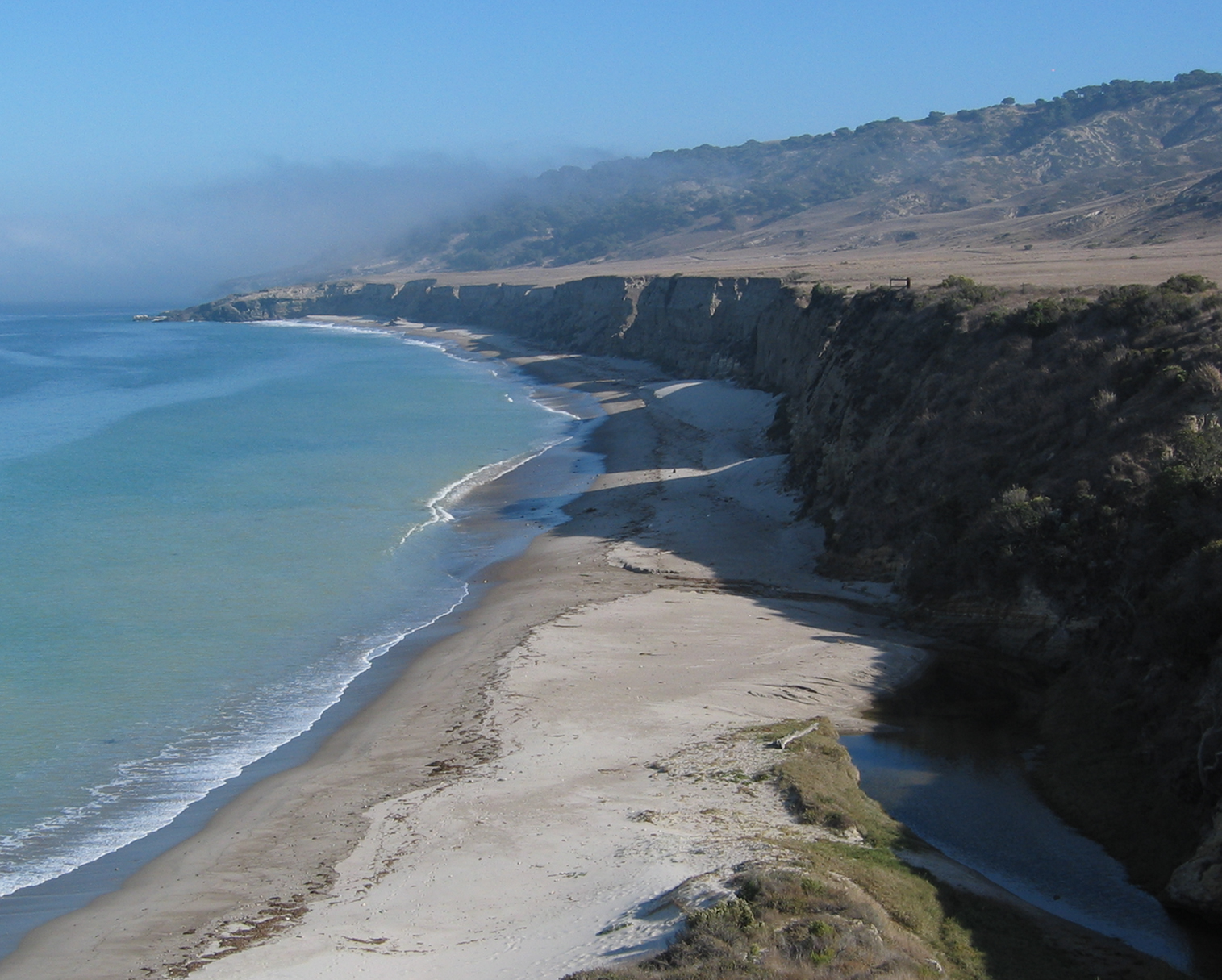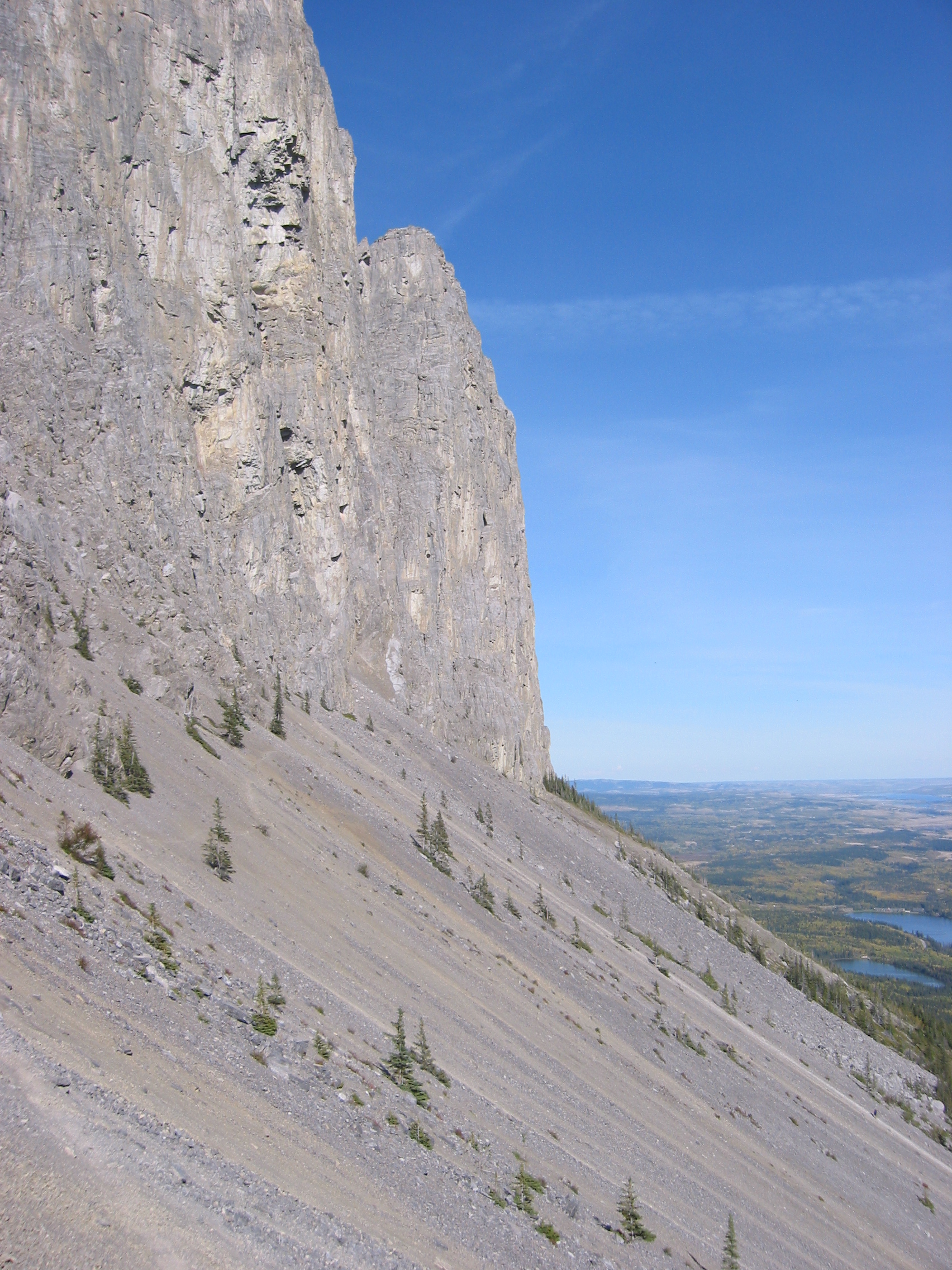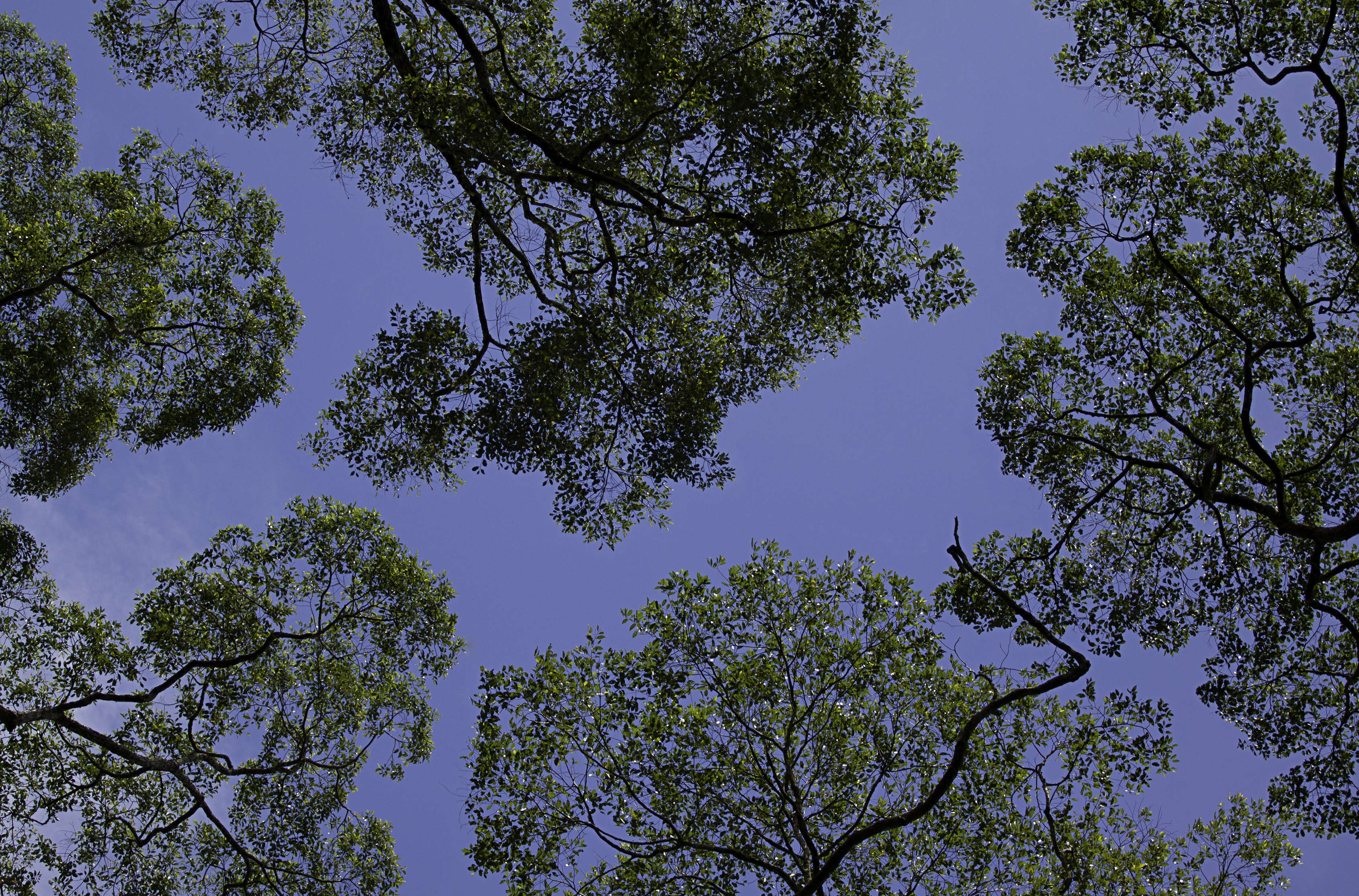|
Pandanus Christmatensis
''Pandanus christmatensis'' is a dioecious tropical plant in the screwpine genus. It is endemic to Christmas Island, an Australian territory in the north-eastern Indian Ocean. The specific epithet, ''"christmatensis"'', comes from its native locality.Flora of Australia Online. Description ''Pandanus christmatensis'' is a small tree or shrub, with prop roots, that grows to 10 m in height. Its leaves are 1–2 m long and 50–80 mm wide, dark green and with marginal prickles. The inflorescence has white bracts. The fruit is orange when ripe. Distribution and habitat The plant forms dense, tangled thickets on the shore terraces of the island, often next to the sea, on exposed limestone cliffs with little soil. It also occurs inland beneath the rainforest canopy, particularly on limestone scree. Taxonomy The plant is closely related to ''Pandanus tectorius'', which is widely distributed through the region, and is very similar to ''Pandanus platycarpus'' from Zanzibar ... [...More Info...] [...Related Items...] OR: [Wikipedia] [Google] [Baidu] |
Ugolino Martelli
Ugolino Martelli (1860–1934) was an Italian botanist, biologist, and mycology, mycologist. Martelli is known for his studies of and contributions to the systematics of the tropical genus ''Pandanus'' and his taxonomic definition of the flora of Sardinia. He also specialized in studies of the flora of Tuscany and Malaysia. Martelli's biological research led to the discovery of ''Felis lunensis'' (Martelli's Cat), an extinction, extinct Felidae, felid of the subfamily Felinae. The holotype specimen was first described by Martelli in 1906 and is now preserved in the collections of the University of Florence in Italy. His student Odoardo Beccari, used Martelli's herbarium for his own research on the definition of the monocot genus ''Pandanus''. Martelli was the director of the Botanical Garden of Pisa from 1929 to 1930. In 1905 in Florence, Martelli founded the ''Webbia Journal of Plant Taxonomy and Geography''. Martelli named the journal in honor of Philip Barker Webb (1793– ... [...More Info...] [...Related Items...] OR: [Wikipedia] [Google] [Baidu] |
Marine Terrace
A raised beach, coastal terrace,Pinter, N (2010): 'Coastal Terraces, Sealevel, and Active Tectonics' (educational exercise), from [02/04/2011] or perched coastline is a relatively flat, horizontal or gently inclined surface of marine origin,Pirazzoli, PA (2005a): 'Marine Terraces', in Schwartz, ML (ed) ''Encyclopedia of Coastal Science.'' Springer, Dordrecht, pp. 632–633 mostly an old abrasion platform which has been lifted out of the sphere of wave activity (sometimes called "tread"). Thus, it lies above or under the current sea level, depending on the time of its formation.Strahler AH; Strahler AN (2005): ''Physische Geographie.'' Ulmer, Stuttgart, 686 p.Leser, H (ed)(2005): ‚''Wörterbuch Allgemeine Geographie.'' Westermann&Deutscher Taschenbuch Verlag, Braunschweig, 1119 p. It is bounded by a steeper ascending slope on the landward side and a steeper descending slope on the seaward side (sometimes called "riser"). Due to its generally flat shape, it is often used for Anth ... [...More Info...] [...Related Items...] OR: [Wikipedia] [Google] [Baidu] |
Endemic Flora Of Christmas Island
Endemism is the state of a species being found only in a single defined geographic location, such as an island, state, nation, country or other defined zone; organisms that are Indigenous (ecology), indigenous to a place are not endemic to it if they are also found elsewhere. For example, the Cape sugarbird is found exclusively in southwestern South Africa and is therefore said to be ''endemic'' to that particular part of the world. An endemic species can also be referred to as an ''endemism'' or, in scientific literature, as an ''endemite''. Similarly, many species found in the Western ghats of India are examples of endemism. Endemism is an important concept in conservation biology for measuring biodiversity in a particular place and evaluating the risk of extinction for species. Endemism is also of interest in evolutionary biology, because it provides clues about how changes in the environment cause species to undergo range shifts (potentially expanding their range into a la ... [...More Info...] [...Related Items...] OR: [Wikipedia] [Google] [Baidu] |
Australian Biological Resources Study
Australian Biological Resources Study (ABRS) is a project undertaken by the Parks Australia Division of Australia's Department of Climate Change, Energy, the Environment and Water. Background ABRS was founded in 1973 from the recommendations of a 1972 Senate Select Committee report on Wildlife Conservation. ABRS was first set up as an Interim Council in 1973, followed by the establishment of the Study proper in 1978. The main aim of the Interim Council was to stimulate the study of taxonomy, distribution and ecology of Australia's biological resources via research grants, and for assessing the long term national requirements for taxonomic studies and maintenance of national collections of biological specimens. Research grants A core aim of the ABRS is to provide funding to support research on taxonomy and systematics for Australia's biota. The first grants offered by ABRS were to support the collection and scientific description of Australian plants and animals. Up to $75 ... [...More Info...] [...Related Items...] OR: [Wikipedia] [Google] [Baidu] |
Zanzibar
Zanzibar is a Tanzanian archipelago off the coast of East Africa. It is located in the Indian Ocean, and consists of many small Island, islands and two large ones: Unguja (the main island, referred to informally as Zanzibar) and Pemba Island. The capital is Zanzibar City, located on the island of Unguja. Its historic centre, Stone Town, is a World Heritage Site. Zanzibar is also a Autonomous administrative divisions, semi-autonomous region that united with Tanganyika (1961–1964), Tanganyika in 1964, and formed the present-day Tanzania, United Republic of Tanzania. The archipelago's main Industry (economics), industries are spices, raffia palm, raffia, and tourism. The main spices produced are clove, nutmeg, cinnamon, coconut, and black pepper. The Zanzibar Archipelago, together with Tanzania's Mafia Island, are sometimes referred to locally as the "Spice Islands". Tourism in Zanzibar is a more recent activity, driven by government promotion that caused an increase from 19,000 ... [...More Info...] [...Related Items...] OR: [Wikipedia] [Google] [Baidu] |
Pandanus Tectorius
''Pandanus tectorius'' is a species of ''Pandanus'' (screwpine) that is native to Malesia, Papuasia, eastern Australia, and the Pacific Islands. It grows in the coastal lowlands typically near the edge of the ocean. Common names in English include thatch screwpine, Tahitian screwpine, hala tree ( in Hawaiian) and pandanus. The fruit is edible and sometimes known as hala fruit. Description ''P. tectorius'' is a small tree that grows upright to reach in height. The single trunk is slender with brown ringed bark. It is spiny, grows to 4.5–11 m (15–35 ft) in width, and forks at a height of . It is supported by aerial roots (prop roots) that firmly anchors the tree to the ground. Roots sometimes grow along the branch, and they grow at wide angles in proportion to the trunk. 林投 20190525170309.jpg, Growth habit 林投 20190530190950.jpg, Aerial roots 林投帶刺氣生根與新葉 20190525170359.jpg, Spiny aerial roots and leaflets Pandanus tectorius fruit.jpg, Fruit s ... [...More Info...] [...Related Items...] OR: [Wikipedia] [Google] [Baidu] |
Scree
Scree is a collection of broken rock fragments at the base of a cliff or other steep rocky mass that has accumulated through periodic rockfall. Landforms associated with these materials are often called talus deposits. The term ''scree'' is applied both to an unstable steep mountain slope composed of rock fragments and other debris, and to the mixture of rock fragments and debris itself. It is loosely synonymous with talus, material that accumulates at the base of a projecting mass of rock, or talus slope, a landform composed of talus. The term ''scree'' is sometimes used more broadly for any sheet of loose rock fragments mantling a slope, while ''talus'' is used more narrowly for material that accumulates at the base of a cliff or other rocky slope from which it has obviously eroded. Scree is formed by rockfall, which distinguishes it from colluvium. Colluvium is rock fragments or soil deposited by rainwash, sheetwash, or slow downhill creep, usually at the base of gentle ... [...More Info...] [...Related Items...] OR: [Wikipedia] [Google] [Baidu] |
Canopy (biology)
In biology, the canopy is the aboveground portion of a plant community, plant cropping or crop, formed by the collection of individual Crown (botany), plant crowns. In forest ecology, the canopy is the upper layer or habitat zone, formed by mature tree crowns and including other biological organisms (epiphytes, lianas, Arboreal, arboreal animals, etc.). The communities that inhabit the canopy layer are thought to be involved in maintaining forest diversity, Ecological resilience, resilience, and functioning. Shade trees normally have a dense canopy that blocks light from lower growing plants. Early observations of canopies were made from the ground using binoculars or by examining fallen material. Researchers would sometimes erroneously rely on extrapolation by using more reachable samples taken from the understory. In some cases, they would use unconventional methods such as chairs suspended on vines or hot-air dirigibles, among others. Modern technology, including adapted ... [...More Info...] [...Related Items...] OR: [Wikipedia] [Google] [Baidu] |
Rainforest
Rainforests are forests characterized by a closed and continuous tree Canopy (biology), canopy, moisture-dependent vegetation, the presence of epiphytes and lianas and the absence of wildfire. Rainforests can be generally classified as tropical rainforests or temperate rainforests, but other types have been described. Estimates vary from 40% to 75% of all biotic community, biotic species being Indigenous (ecology), indigenous to the rainforests. There may be many millions of species of plants, insects and microorganisms still undiscovered in tropical rainforests. Tropical rainforests have been called the "jewels of the Earth" and the "medicine chest (idiom), world's largest pharmacy", because over one quarter of natural medicines have been discovered there. Rainforests as well as endemic rainforest species are rapidly disappearing due to #Deforestation, deforestation, the resulting habitat loss and air pollution, pollution of the atmosphere. Definition Rainforests are cha ... [...More Info...] [...Related Items...] OR: [Wikipedia] [Google] [Baidu] |
Limestone
Limestone is a type of carbonate rock, carbonate sedimentary rock which is the main source of the material Lime (material), lime. It is composed mostly of the minerals calcite and aragonite, which are different Polymorphism (materials science), crystal forms of calcium carbonate . Limestone forms when these minerals Precipitation (chemistry), precipitate out of water containing dissolved calcium. This can take place through both biological and nonbiological processes, though biological processes, such as the accumulation of corals and shells in the sea, have likely been more important for the last 540 million years. Limestone often contains fossils which provide scientists with information on ancient environments and on the evolution of life. About 20% to 25% of sedimentary rock is carbonate rock, and most of this is limestone. The remaining carbonate rock is mostly Dolomite (rock), dolomite, a closely related rock, which contains a high percentage of the mineral Dolomite (mine ... [...More Info...] [...Related Items...] OR: [Wikipedia] [Google] [Baidu] |
Bract
In botany, a bract is a modified or specialized leaf, associated with a reproductive structure such as a flower, inflorescence axis or cone scale. Bracts are usually different from foliage leaves in size, color, shape or texture. They also look different from the parts of the flower, such as the petals or sepals. A plant having bracts is referred to as bracteate or bracteolate, while one that lacks them is referred to as ebracteate or ebracteolate. Variants Some bracts are brightly coloured which aid in the attraction of pollinators, either together with the perianth or instead of it. Examples of this type of bract include those of '' Euphorbia pulcherrima'' (poinsettia) and '' Bougainvillea'': both of these have large colourful bracts surrounding much smaller, less colourful flowers. In grasses, each floret (flower) is enclosed in a pair of papery bracts, called the lemma (lower bract) and palea (upper bract), while each spikelet (group of florets) has a further pair o ... [...More Info...] [...Related Items...] OR: [Wikipedia] [Google] [Baidu] |
Dioecious
Dioecy ( ; ; adj. dioecious, ) is a characteristic of certain species that have distinct unisexual individuals, each producing either male or female gametes, either directly (in animals) or indirectly (in seed plants). Dioecious reproduction is biparental reproduction. Dioecy has costs, since only the female part of the population directly produces offspring. It is one method for excluding self-fertilization and promoting allogamy (outcrossing), and thus tends to reduce the expression of recessive deleterious mutations present in a population. Plants have several other methods of preventing self-fertilization including, for example, dichogamy, herkogamy, and self-incompatibility. In zoology In zoology, dioecy means that an animal is either male or female, in which case the synonym gonochory is more often used. Most animal species are gonochoric, almost all vertebrate species are gonochoric, and all bird and mammal species are gonochoric. Dioecy may also describe colonies ... [...More Info...] [...Related Items...] OR: [Wikipedia] [Google] [Baidu] |





